平成28年06月29日 水曜日号
“おおらかとりどり 平成23年”
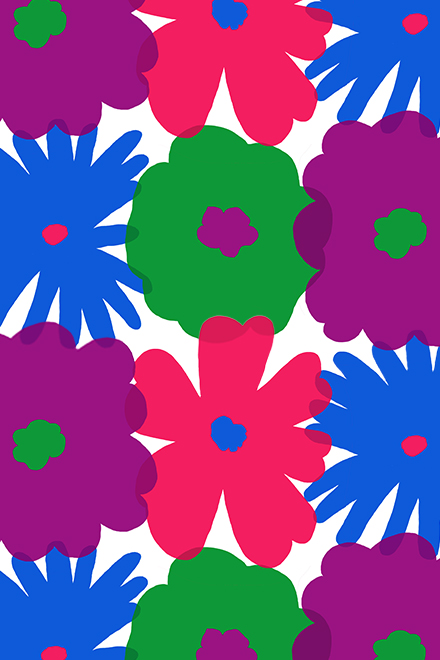
小さいことにとらわれずゆったり
おおらかに咲いた花。
色とりどりに花開くそのさまは
みなで力を合わせているようで美しい。
(脇阪 克二)
"Broad colorful serenity"(2011,by Katsuji Wakisaka)
Regardless of anything, peaceful,
Flowers bloom naturally, colorful.
They gather together, share their beauty,
Evoking serenity, graceful.
| English translation by LI XIAO XIAO |
"Ōraka Toridori "(2011, par Katsuji Wakisaka)
Sans se soucier de rien, paisibles,
Les fleurs fleurissent généreusement.
Ces fleurs colorées qui s'ouvrent au monde
Renferment une beauté partagée de tous.
| Traduction française par Jean-Baptiste Fauvel Matsumoto |
"落落大方 彩色"(2011, 脇阪 克二)
花開得落落大方
繽紛,嫻雅,不拘謹
像是鼓足勁一起努力
綻放出彩色的大花們
自然而美好
| 中譯 : 李 瀟瀟 |
→こちらのテキスタイルデザイン商品
(Textile products with this pattern)
平成28年06月25日 土曜日号
“半纏(はんてん) 平成28年”

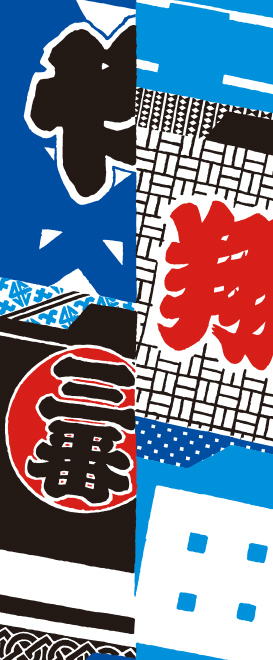
江戸時代、庶民の間で着用されるようになり
主に職人やお店の作業着として
広く愛用されてきた。
現在は祭半纒を着た威勢のいい姿が
祭を盛り上げる。
江戸火消しや消防団員の半纒姿も
見ることが出来る。
半纒は誰が着ても形になり
それ一枚着るだけで目立ち、
その世界の人になれる優れものだ。
(脇阪 克二)
"Hanten"(2016,by Katsuji Wakisaka)
Hanten, or traditional Japanese short jacket, became popular during the Edo period.
It is widely worn by the common people as craftsmen's working clothes.
Hanten is also the uniform for firefighters of Edo.
Nowadays, people wear Hanten at traditional Japanese festivals to spice up the atmosphere.
No matter who you are, putting on a Hanten will make you stand out and become drop‐dead gorgeous.
| English translation by LI XIAO XIAO |
"Hanten, / veste traditionnelle"((2016, par Katsuji Wakisaka)
Pendant la période d’Edo, le Hanten, sorte de veste traditionnelle utilisée comme uniforme,
en vint à être porté par le peuple japonais, principalement par les artisans en tant qu'habit de travail.
Aujourd'hui, les japonais plein d'entrain en portent lors des festivals traditionnels.
Il peut aussi être aperçu sur les épaules des pompiers depuis l'époque d’Edo.
Peu importe qui le porte, le Hanten attire les regards et représente un excellent vêtement
qui montre l'appartenance à un groupe particulier.
| Traduction française par Jean-Baptiste Fauvel Matsumoto |
"半缠"(2016, 胁阪 克二)
半缠是一种和服短外褂,
多为江户时代的手艺人所穿用。
日本的传统节庆活动中,
身着祭典半缠的年青人魄力十足,
是热闹庆典中的一笔浓墨重彩。
半缠还是江户时代的消防警备员的制服。
不论是谁,披上半缠,都会显得潇洒逸群,引人注目。
| 中译 : 李 瀟瀟 |
→こちらのテキスタイルデザイン商品
(Textile products with this pattern)
平成28年06月22日 水曜日号
“ぴちぴち ちゃぷちゃぷ 平成7年”
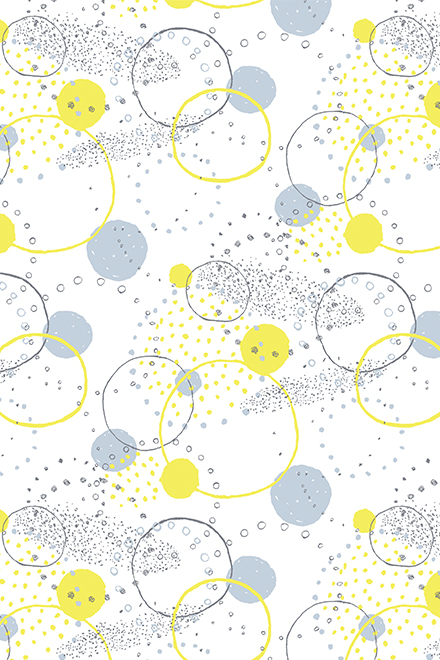
雨が地面に落ちて
水しぶきが輪をかいて広がっていく。
水たまりに雨がおちてぴちぴちとびはねる
水たまりでちゃぷちゃぷと子どもたちが遊んでいる。
ぴちぴち ちゃぷちゃぷ らんらんらん。
(脇阪 克二)
"Pitter patter"(1995,by Katsuji Wakisaka)
Listen to the rain!
Pitter patter, pitter patter,
Dropping, dropping, dropping on the ground.
Children play in a puddle there,
skipping with joy,tap, tap, tap...
Listen to the sound!
Pitter patter, pitter patter,
N oise, n oise, n oise ♪
| English translation by LI XIAO XIAO |
"Ploc-floc, flop-flop"(1995, par Katsuji Wakisaka)
La pluie tombe par terre.
Les gouttes d'eau forment des cercles en se propageant.
La pluie alimente les flaques, ploc-floc.
Les enfants s'amusent dans les flaques, flop-flop.
Ploc-floc flop-flop ♪
| Traduction française par Jean-Baptiste Fauvel Matsumoto |
"淅沥淅沥,哗啦哗啦"(1995, 胁阪 克二)
雨滴卜卜落下。
地面溅起圆廓的水沫。
淅沥淅沥,哗啦哗啦…
孩童们踩跃在水洼间嬉闹,
啪嗒啪嗒,拔喇拔喇…
淅沥淅沥,哗啦哗啦,啦啦啦...
| 中译 : 李 瀟瀟 |
→こちらのテキスタイルデザイン商品
(Textile products with this pattern)
平成28年06月18日 土曜日号
“夏至 平成26年”

一年のうちで昼間が一番長い日。
でも一番暑い日ではなくて梅雨の季節。
暑くなってきているけれど雨が降ったり
雷が鳴ったり晴れたりしている。
本格的な夏を迎える前に
天が力をたくわえている時期ともいえる。
(脇阪 克二)
"Geshi / June solstice"(2014,by Katsuji Wakisaka)
The summer solstice day,
The longest day of the year-but not the hottest.
Rainy season starts around this period.
It is raining on and off,
With thunder rumble and roar.
Sun is breaking through,
Store up power for the full summer.
| English translation by LI XIAO XIAO |
"Geshi / Solstice d'été"(2014, par Katsuji Wakisaka)
Il s'agit du plus long jour de l'année.
Mais pas le plus torride en cette période des pluies.
Il fait de plus en plus chaud, avec un temps pluvieux,
orageux et parfois même ensoleillé.
Avant le début du vrai été japonais,
Le ciel en profite pour recharger ses batteries.
| Traduction française par Jean-Baptiste Fauvel Matsumoto |
"夏至"(2014, 脇阪 克二)
夏至,是一年中白晝最長的一天
但并非最熱的時期
此時日本正值雨季
反復驟雨、電閃雷鳴、溽热放晴
夏至的天氣仿佛在爲仲夏的炎熱蓄勢
| 中譯 : 李 瀟瀟 |
→こちらのテキスタイルデザイン商品
(Textile products with this pattern)
平成28年06月15日 水曜日号
“花風船 平成27年”
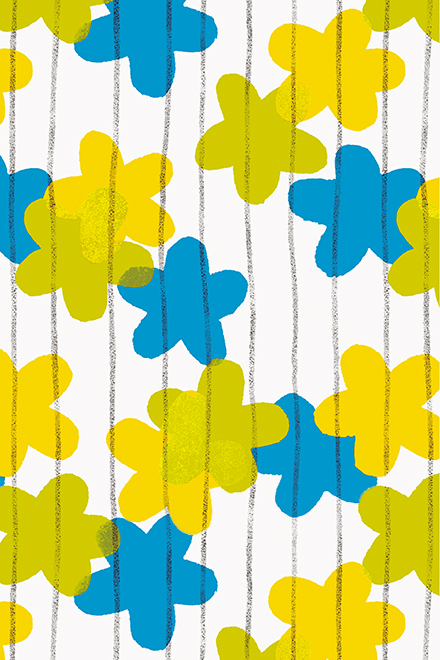
花の形をした風船が
ぽっかり 空に浮かんでいたら
かわいいだろうな。
(脇阪 克二)
"Flower-shaped balloons"(2015,by Katsuji Wakisaka)
Big flower-shaped balloons,
One or two,
lightly floating in the air.
What a lovely sight to see!
| English translation by LI XIAO XIAO |
"Ballons floraux"(2015, par Katsuji Wakisaka)
De grands ballons en forme de fleurs
Flottent paisiblement dans le ciel.
Quel magnifique spectacle!
| Traduction française par Jean-Baptiste Fauvel Matsumoto |
"花氣球"(2015, 脇阪 克二)
花形氣球
悠然懸浮在半空中
定是一幅療愈的光景
| 中譯 : 李 瀟瀟 |
→こちらのテキスタイルデザイン商品
(Textile products with this pattern)
平成28年06月10日 金曜日号
“雨々ふれ々 平成23年”
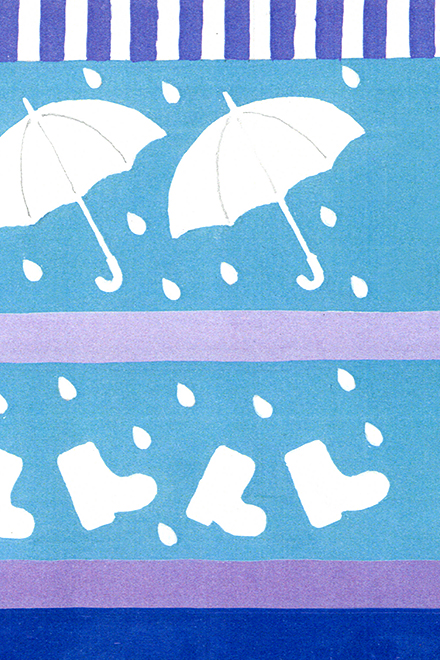
今日も又、雨が降っている。
雲がたれこめてうっとうしい。
せめて気持ちだけは明るくなるように
雨傘をさし、長靴をはいて元気に雨の中を歩こう。
雨々ふれふれ…。
(脇阪 克二)
"Ame-ame fure-fure / It's raining it's pouring"(2011,by Katsuji Wakisaka)
Another rainy day,
Another dismal weather with low hanging clouds,
Ì put on my rainshoes, walking through the rain,
to have, at least, ease of mind.
Pitter-patter, pitter-patter,
It's raining it's pouring.
| English translation by LI XIAO XIAO |
"Ame-ame fure-fure / Tombe tombe tombe la pluie"(2011, par Katsuji Wakisaka)
Aujourd'hui encore, la pluie ne cesse de tomber. De menaçants nuages noirs remplissent le ciel. Pour conjurer ce temps et voir la vie en rose, Je mets mes bottes, prends mon parapluie Et me balade le cœur joyeux sous la pluie estivale. Tombe tombe tombe la pluie...
| Traduction française par Jean-Baptiste Fauvel Matsumoto |
"淅淅沥沥"(2011, 胁阪 克二)
今日又雨。
天气阴沉,云层低垂笼罩。
我换上长筒雨靴,
迎合雨声的节奏,
撑伞踱步。
吧嗒吧嗒,吧嗒吧嗒,
踏出心中一小片明朗。
| 中译 : 李 瀟瀟 |
→こちらのテキスタイルデザイン商品
(Textile products with this pattern)
平成28年06月05日 日曜日号
“紫陽花 平成23年”
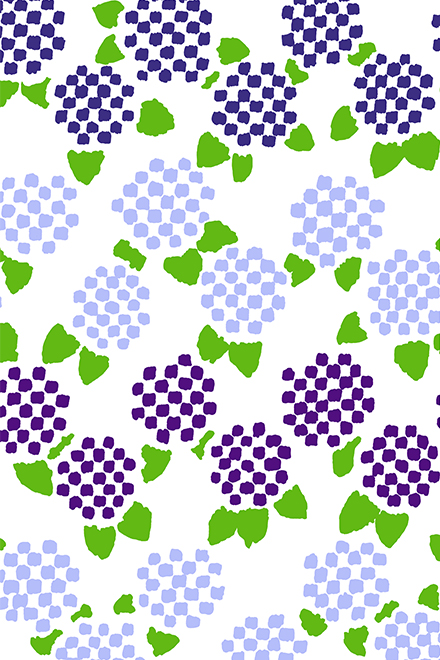
紫陽花の花の咲き始めは白く
次第に水色から淡青色に色づき
最後は深海を思わせる濃いブルーに。
梅雨の長雨に煙る庭に
さまざまな濃淡の青が鮮やかに
映えるさまは、心にしみる。
(脇阪 克二)
"Ajisai / Hydrangea"(2011,by Katsuji Wakisaka)
Hydrangea begin to bloom. Changing color from white to light blue, Then getting darker and darker, Finally, deep as the dark blue sea. The rainy season has set in, The garden is dimly in the drizzle. But look at that! Vivid hydrangea dripping blooms of gradation blue, Performing a touching scene.
| English translation by LI XIAO XIAO |
"Ajisai / Hortensia"(2011, par Katsuji Wakisaka)
Les hortensias commencent à fleurir Passant du blanc au bleu clair, Pour finir dans le bleu foncé des fonds marins. Dans le jardin arrosé par l'eau des pluies, Les hortensias l'agrémentent de teintes bleutées qui dépeignent jusque dans nos cœurs.
| Traduction française par Jean-Baptiste Fauvel Matsumoto |
"紫阳花"(2011, 胁阪 克二)
紫阳花花色多变,初时白色,渐转浅蓝,
经天青蓝,最后变为深海蓝。
在梅雨时节烟雨缭绕的庭院中,
晕染出层层渐变的蓝霞,
沁人心脾。
| 中译 : 李 瀟瀟 |
→こちらのテキスタイルデザイン商品
(Textile products with this pattern)
平成28年06月01日 水曜日号
“早苗 平成21年”

雨が降りはじめる六月。
苗代で育ててきた稲の苗を田に移し、田植えをする。
水がはられた田に点々と植えられた早苗は清々しく初々しい。
たっぷりと水をたたえた水田の風景は、しっとりと美しい。
日本は瑞穂の国と言われるが、それはこの風景から来たもの。
(脇阪 克二)
"Sanae / Rice seedlings"(2009,by Katsuji Wakisaka)
The month of June and the beginning of the rains.
It is time for rice transplanting.
Look, the paddy fields were flecked with rice sprouts,
refreshing and flourishing.
What a picture of prosperity!
This is the reason why Japan is known as the Land of Vigorous Rice Plants.
| English translation by LI XIAO XIAO |
"Sanae / Repiquage du riz"(2009, par Katsuji Wakisaka)
Le mois de Juin et le début des pluies.
Il est temps de déplacer les plants de riz cultivés jusqu'alors dans des semis et de les repiquer.
Les plants de riz repiqués dans la terre et arrosés apportent un vent de fraîcheur et de nouveauté.
Le tableau des rizières, dont les plants baignent dans l'eau, est de toute beauté.
C'est pourquoi il est souvent dit que le Japon est le pays du riz.
| Traduction française par Jean-Baptiste Fauvel Matsumoto |
"早苗"(2009, 胁阪 克二)
六月雨水增多。
眼下正是农家插秧的时节。
人们把水稻秧苗从秧田移植到稻田里,
田间一片清新繁荣。
耕地蓄水,透着一股润泽的清美。
日本的“瑞穗之国”的美誉,
或许正是来源于这一派早苗盛景吧。
| 中译 : 李 瀟瀟 |
→こちらのテキスタイルデザイン商品
(Textile products with this pattern)
平成28年05月28日 土曜日号
“路地 平成6年”
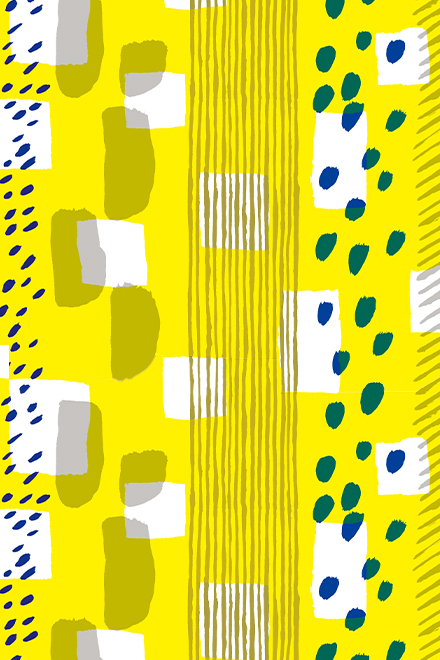
今日はお茶会。
門をくぐり路地に入る。
両側の植えこみには竹やいろんな
種類の木が目を楽しませてくれる。
打ち水された敷石を歩んで
角を曲がると一面が苔でおおわれている。
足元も飛び石になっていて
心地よいリズムで気持が茶室へと向っていく。
(脇阪 克二)
"Roji / Courtyard of teahouse"(1994,by Katsuji Wakisaka)
Tea ceremony is held today.
Entering the courtyard through the door,
feeling pleasant over the greens of bamboo hedges on two sides.
Wetted gritty stones stretch ahead,
Moss at the corner leaps into the sight.
Step on a row of flat step stones,
Ambling towards the teahouse.
| English translation by LI XIAO XIAO |
"Roji / Petite ruelle"(1994, par Katsuji Wakisaka)
Aujourd'hui est prévu un ochakai, discussions et échanges autour d'un thé
Je passe sous une porte et rentre dans une ruelle.
Dans les pots de chaque côté, des bambous et toutes sortes d'arbres illuminent le chemin.
Je marche sur ses pavés détrempés et en tournant au coin de la ruelle,
Une façade recouverte de mousses apparaît.
Le chemin a laissé place à des pierres de gué
Qui mène, d'un rythme paisible, mon cœur droit vers le salon de thé.
| Traduction française par Jean-Baptiste Fauvel Matsumoto |
"胡同"(1994, 脇阪 克二)
今日有茶會
穿過門步入連結至茶室的小路
兩側竹林植被,綠意悅目愉心
踩著亭主為迎接來客,撒了水的石板
轉角一面青苔覆被映入眼簾
脚下轉而為一串間隔開來的石塊
按照石頭排開的節奏,邁開步伐向茶室走去
| 中譯 : 李 瀟瀟 |
→こちらのテキスタイルデザイン商品
(Textile products with this pattern)
平成28年05月25日 水曜日号
“浮世絵 平成28年”

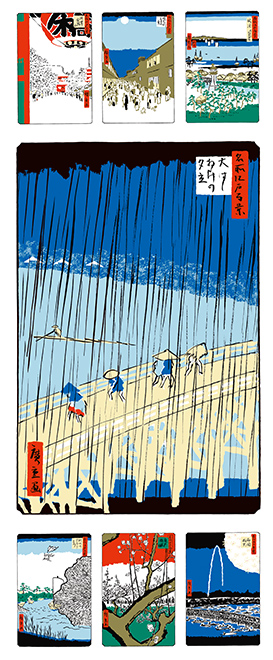
江戸時代に人々に愛された浮世絵。
木版画として量産され
一般大衆が安く購入できた。
美術品としてではなく
大衆が求めているものを表現しており
人々は手にとって眺め楽しんだ。
現代のマンガとの共通点が多く
僕はこの世界にこそ
日本文化の真髄があると思っている。
これは広重の江戸名所百景を
中心に構成した。
(脇阪克二)
"Ukiyo-e"(2016,by Katsuji Wakisaka)
Ukiyo-e, literally ‘paintings of the floating world’,
were widely loved since the Edo period.
Most of ukiyo-e were woodblock prints and were affordable to ordinary people as they could be mass-produced.
Thus, they developed into popular art.
In a sense, ukiyo-e are similar to modern comics.
This, in essence, is the soul of Japanese culture.
Incidentally,「One Hundred Famous Views of Edo」by Hiroshige,
is the representative achievement of ukiyo-e.
| English translation by LI XIAO XIAO |
"Ukiyo-e"(2016, par Katsuji Wakisaka)
Les ukiyo-e sont des estampes populaire grandement appréciées pendant l'ère d’Edo. Produites en grande quantité comme gravure sur bois, le peuple pouvait en acheter à bas prix. Non pas considérées comme des œuvres d'art, Elles représentaient des histories populaires, Que les japonais achetaient pour se divertir. Partageant de nombreux points communs avec nos mangas actuels, j'ai l'intime conviction qu'elles représentent en partie l'essence de la culture japonaise. Mon design est inspiré des œuvres de l'artiste Hiroshige, “les cent vues d’Edo”.
| Traduction française par Jean-Baptiste Fauvel Matsumoto |
"浮世绘"(2016, 胁阪 克二)
浮世绘是江户时期兴起的一种广受世人喜爱的民族艺术。
它以木版画的形式,作品大量印制,
从而成为普通老百姓也买得起的雅俗共赏的绘作。
浮世绘类似现代漫画,为迎合大众需求,主要描绘人们日常生活,
其中歌川广重的《名所江户百景》最具代表性。
在我看来,浮世绘中蕴含着日本文化的真髓。
| 中译 : 李 瀟瀟 |
→こちらのテキスタイルデザイン商品
(Textile products with this pattern)
平成28年05月21日 土曜日号
“葉陰 平成12年”
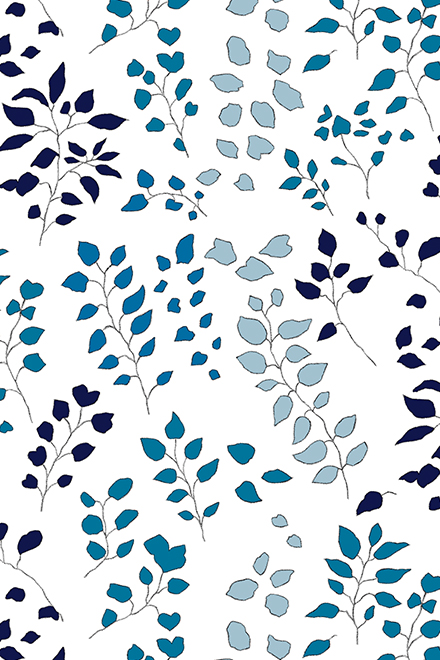
風が吹いている。
緑がゆれている。
日が輝いて葉陰がゆらゆらゆれて
緑の色が濃く淡くうつろっていく。
ゆっくりと時が過ぎていく。
(脇阪 克二)
"Hakage / Leafy shadow"(2000,by Katsuji Wakisaka)
Bathed in the winds,
Green's waving.
Shadow sways,
with sunlight beneath the leafy tree.
The leafy shadow are dyed into green,
lighter and darker.
While time gently flows away,
| English translation by LI XIAO XIAO |
"Hakage / À l'ombre des feuilles"(2000, par Katsuji Wakisaka)
Le vent souffle et la verdure s'agite.
L'ombre des feuilles ondule sous le soleil
Et assombrie le vert des arbres.
Pendant que le temps suit paisiblement son cours...
| Traduction française par Jean-Baptiste Fauvel Matsumoto |
"叶影"(2000, 胁阪 克二)
风拂,
绿晃,
日光倾洒,
叶影悠悠荡荡。
浓的,
淡的,
绿影徘徊,
时光悠悠荡荡。
| 中译 : 李 瀟瀟 |
→こちらのテキスタイルデザイン商品
(Textile products with this pattern)
平成28年05月18日 水曜日号
“弥栄 平成27年”
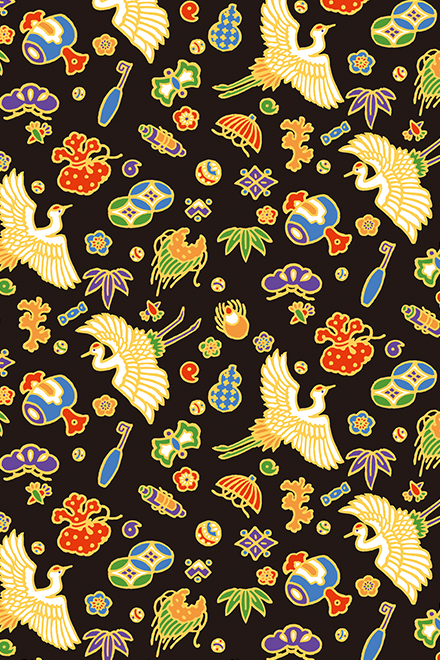
打ち出のこづち、宝袋、巻物、珊瑚、鶴、松竹梅など、宝物やおめでたいものを集めた宝づくし。
着物の世界では長く人々に愛されてきた吉祥文様。
ますます栄えるように“弥栄”と名づけました。
(脇阪 克二)
"Iyasaka / Increasing Prosperity"(2015,by Katsuji Wakisaka)
I arranged all the lucky charms in Japan:
Uchide no Kozuchi (Mallet of Luck), treasure bags, scroll, coral, crane, shochikubai (pine, bamboo and plum trees)...
They are also likely to be found on kimono as auspicious motifs.
I named it 'iyasaka', meaning increasing prosperity and happiness.
| English translation by LI XIAO XIAO |
"Iyasaka / Prospérité croissante"(2015, par Katsuji Wakisaka)
J'ai rassemblé tous les trésors et objets de célébrations
comme le Maillet de la Chance (uchide no kozuchi), les sacs à trésors,
les parchemins, le corail, les grues ou encore les pins, bambous et pruniers japonais…
On les retrouve également sur les kimonos en tant que motifs de bon augure.
Je l'ai appelé “Iyasaka”, qui signifie prospérité croissante.
| Traduction française par Jean-Baptiste Fauvel Matsumoto |
"彌榮"(2015, 脇阪 克二)
如意小寶槌、寶袋、卷軸書畫、珊瑚。仙鶴、松竹梅……
將寶物與吉祥物收集起來製成這幅寶物畫。
這些圖案也是和服中具有代表性的吉祥紋樣。
我將此設計命名為“彌榮”,賦予它日益繁榮的意涵。
| 中譯 : 李 瀟瀟 |
→こちらのテキスタイルデザイン商品
(Textile products with this pattern)
平成28年05月14日 土曜日号
“藤棚 平成23年”
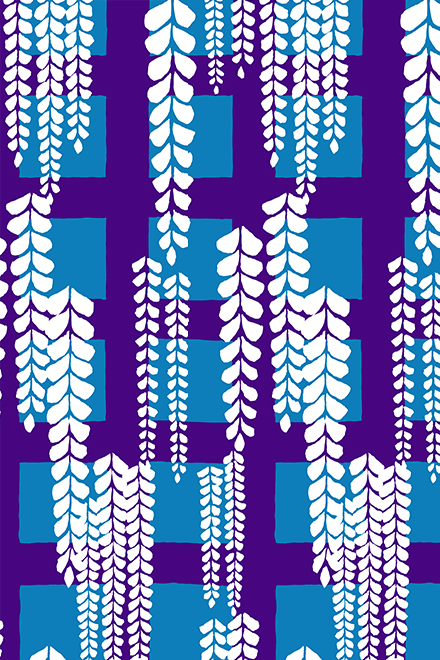
木々の間に薄紫のかたまりを見つける。
野生のふじが蔓をはわせて
木を登り、花を咲かせている。
緑の重なりの中で見るふじは力強い。
(脇阪 克二)
"Fujidana / Wisteria trellis"(2011,by Katsuji Wakisaka)
Wisterias among the trees,
Like the waves of pale violet rolling upon a fresh green sea.
Wild wisterias train their vines against lush branches,
showing their strong expressive and visual impact life.
| English translation by LI XIAO XIAO |
"Fujidana / Wisteria"(2011, par Katsuji Wakisaka)
On trouve parfois entre des arbres un parterre violet clair. Les glycines sauvages poussent sur les vignes, Remontent les sarments et font éclore leurs fleurs. Ces fleurs que l'on voit dans cette verdure si dense sont tellement vigoureuses.
| Traduction française par Jean-Baptiste Fauvel Matsumoto |
"藤架"(2011, 胁阪 克二)
繁茂枝藤里,
忽现的一卷薄紫,
是野生紫藤在攀蔓吐蕊。
绽放在一片葱茏中的紫藤啊,
强烈如你,胜过一切晚春的盎然。
| 中译 : 李 瀟瀟 |
→こちらのテキスタイルデザイン商品
(Textile products with this pattern)
平成28年05月11日 水曜日号
“立夏 平成25年”
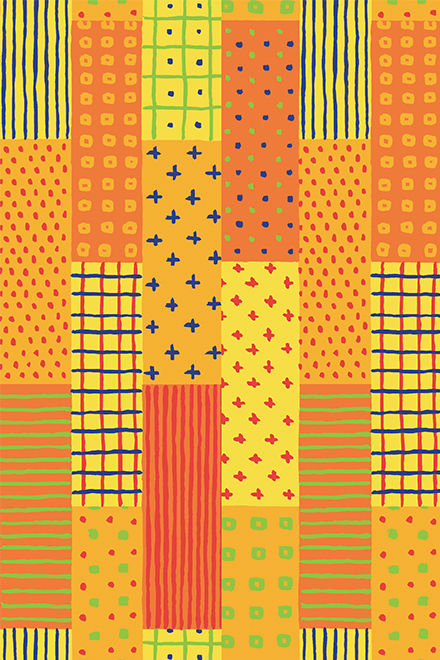
春がようやく終わり野山に新緑が目立ち
風もさわやかになってきた。
少しずつだけれど夏の気配が
あちこちに感じられてくる。
お弁当を持って野や山へ遊びに行きたい季節。
(脇阪 克二)
"Rikka / First day of summer"(2013,by Katsuji Wakisaka)
As spring fades away,
Fields are bathed in summer's ray.
Early summer signs,
here and there.
Fresh green leaves cover hills,
Light breeze blowing through the azure sky.
Early summer signs,
Inviting you to go on a picnic in the smiling countryside.
| English translation by LI XIAO XIAO |
"Rikka / Premier jour de l'été "(2013, par Katsuji Wakisaka)
Le printemps se termine enfin,
Laissant place à la verdure des cultures
Ainsi qu'aux douces brises estivales.
Peu à peu, les signes avant-coureurs de l'été
Se font de plus en plus ressentir, ça et là.
Ils nous donnent envie d'aller pique-niquer en campagne ou en montagne.
| Traduction française par Jean-Baptiste Fauvel Matsumoto |
"立夏"(2013, 脇阪 克二)
春天終於過去
郊外山野新綠蔓延
初夏熏風吹拂
處處充滿著夏日來臨的氣息
晴和立夏
讓人想帶上便當去戶外野餐
| 中譯 : 李 瀟瀟 |
→こちらのテキスタイルデザイン商品
(Textile products with this pattern)
平成28年04月30日 土曜日号
“鯉のぼり 平成23年”

晴れた青空に風をいっぱいに受けて、
ゆうゆうと泳ぐ鯉のぼり。
昔は男の子の出世を願って立てられたが、
現在では家族みんなの願いをこめて
何尾もあげることもあるようだ。
大空を泳ぎ回る姿は、自由自在で気持ちが解放される。
(脇阪 克二)
"Koinobori / Carp streamer"(2011,by Katsuji Wakisaka)
Carps swimming in the air,
higher than the roof, up to the blue blue sky.
It’s the Koinobori, huge carp-shaped windsocks on Boy’s day,
expressing hope that each boy in the family will grow up healthy and succeed in life.
At present, Koinobori are commonly flown in the number of family members,
representing the wishes of the whole family.
Look! They are swimming breezily across the noble sky.
What a refreshing Mayday!
| English translation by LI XIAO XIAO |
"Koi-nobori / les carpes flottantes"(2011, par Katsuji Wakisaka)
Dans un grand ciel bleu, les drapeaux en forme de carpes colorées flottent au vent.
Autrefois accroché pour souhaiter la réussite sociale aux garçons,
elles sont aujourd'hui utilisées, souvent en grand nombre,
pour représenter les souhaits de tous les membres de la famille.
Leurs silhouettes nageant dans le noble ciel
Ondulent librement d'un air libéré.
| Traduction française par Jean-Baptiste Fauvel Matsumoto |
"鲤鱼旗"(2011, 胁阪 克二)
鲜亮的大鲤鱼,乘着风,
在湛蓝晴空下悠然畅游。
在日本为庆祝五月五日男孩节,有儿子的家庭外挂鲤鱼旗,以祈祷家中男孩早日成材。
现今鲤鱼旗承载的已不止是对孩子立身成功的盼望,
依次悬挂黑鲤鱼(爸爸),红鲤鱼(妈妈)和青色小鲤鱼(孩子),
包含着全家人的美好祈愿。
望着晴空中逸然舞动的鲤鱼旗,
心情也随之明朗舒畅起来。
| 中译 : 李 瀟瀟 |
→こちらのテキスタイルデザイン商品
(Textile products with this pattern)
平成28年04月28日 木曜日号
“尚武(しょうぶ) 平成21年”
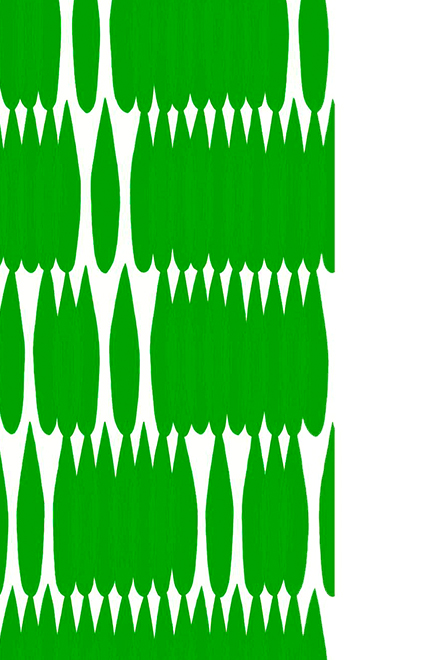
5月の端午の節句には菖蒲(しょうぶ)をお風呂に入れて、邪気を払い、
男の子が強くたくましく育つことを祈願する。
葉が刀に似ているところから「尚武(武をすすめる)」とも表される。
菖蒲の葉だけで模様を作るのは、むずかしい。シンプルに並べて
少しだけ変化をつけると、菖蒲が立ち並んでいる感じが出てきた。
端に白い空間を残したことで、間(ま)が出来て粋になった。
(脇阪 克二)
"Shōbu / Iris courage"(2009,by Katsuji Wakisaka)
Tango no Sekku in May 5, is known as Boy's day in Japan to wish boys healthy growth and courage.
A few blades of Iris are put into a bathtube when people take a bath on this day.
Iris, or Shōbu in Japanese, is linked to "尚武" (martial spirit), of which is pronounced in the same way, and as iris have a sword-like shape.
It is quiet difficult to create a pattern from iris leaves.
I keep aligning them while leaving white spaces irregularly.
The blank spaces provide the chic cream of this textile.
| English translation by LI XIAO XIAO |
"Shōbu / Militarisme"(2009, par Katsuji Wakisaka)
Le Jour des Garçons en Mars, les japonais mettent des Acores odorants dans le bain afin de se purifier et de prier pour que l'enfant grandisse avec force et robustesse.
Le terme “Shōbu” (Suivre la voie du sabre) vient de la ressemblance de cette fleur à une lame de Katana. Il est délicat de créer un motif à partir de feuilles d’Acores odorants.
En les alignant simplement, on a l'impression qu'ils se tiennent en rang, tel une armée.
La bordure blanche sur le côté droit crée une marge, dynamique et chic.
| Traduction française par Jean-Baptiste Fauvel Matsumoto |
"尚武"(2009, 脇阪 克二)
5月5日是日本的端午節,又稱男孩節。
這一天有用菖蒲泡澡辟邪,祈願家中男孩健康成長的習俗。
菖蒲葉形狀與劍相似,所以漢字也寫作「尚武」。
我將菖蒲葉竪著排佈,並將一端留白,
繪製成了這幅獨特的「尚武」印花。
| 中譯 : 李 瀟瀟 |
→こちらのテキスタイルデザイン商品
(Textile products with this pattern)
平成28年04月26日 火曜日号
“武者絵 平成28年”

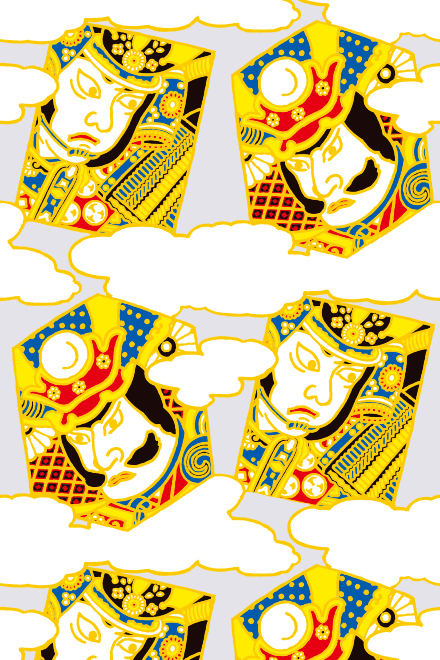
歴史、伝説、軍記物などに
登場する英雄、豪傑、武将や
その合戦の場面を描いたもの。
地方によっては5月の端午の節句に
武者絵のぼりを自宅の庭に立てる。
男児の誕生を祝い
無病息災、立身出世を願う。
(脇阪克二)
"Musha-e / Japanese warrior prints"(2016,by Katsuji Wakisaka)
Musha-e, or warrior prints, depicted armored samurai in battle scenes and other historical or legendary settings.
In some places, there is a custom of setting out Mushae-nobori (labrums with a warrior prints) in the garden, as the decoration of Tango-no-sekku on May 5 with the wish for the boy’s birth, sound growth and success in life.
| English translation by LI XIAO XIAO |
"Musha-e / Busshae Image de guerrier"(2016, par Katsuji Wakisaka)
Nous avons dessinés une scène de bataille dépeignant un héro, un grand homme et un général qui apparaîssent dans l’Histoire, les légendes et les chroniques de guerre.
Selon les régions, le Jour des Garçons, on installe dans le jardin un étendard de guerrier, pour fêter la naissance d'un garçon et lui souhaiter une bonne santé et une réussite sociale dans sa vie future.
| Traduction française par Jean-Baptiste Fauvel Matsumoto |
"武者绘"(2016, 胁阪 克二)
武者,即武士;
武士绘,指描绘历史、传说战争小说中武士着甲胄的姿态,或交战情景的浮世绘。
在日本一些地区,人们在端午节那天挂出印有武士绘的旗子,
用来庆祝家中男孩子的诞生,或祈愿他们的无病消灾,出人头地。
| 中译 : 李 瀟瀟 |
→こちらのテキスタイルデザイン商品
(Textile products with this pattern)
平成28年04月23日 土曜日号
“たけのこ 平成26年”
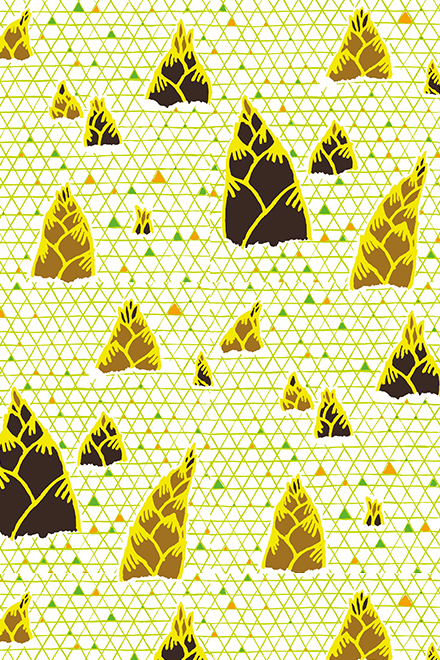
土の表面にたけのこが顔をのぞかせている。
ちょっとだけ芽を出しているものや
頭だけのぞかせているもの、ぐっと成長したものなど
背くらべをしているようでほほえましい。
そうして育ったたけのこの独特の味わいは
春の楽しみのひとつですね。
(脇阪 克二)
"Takenoko / Bamboo shoot"(2014,by Katsuji Wakisaka)
Takenoko(bamboo shoot) is breaking through the earth a bit.
Some of them put forth little buds,
some peek just their top, some are grown up vigorously,
as if they are showing which is the taller, which is the tallest. That is really charming.
The unique texture and refreshing taste of these takenoko grown up that way is one of our spring savors.
| English translation by Yuka Mamekoshi |
"Takenoko / Pousse de bambou"(2014, par Katsuji Wakisaka)
Les pousses de bambous pointent le bout de leur nez.
Certaines émergent à peine de terre, pendant que d'autres sortent à moitié, alors que les dernières sont déjà prêtes à la cueillette.
De ravissantes petites pousses, qui ont l'air de se comparer pour savoir qui est la plus grande. Déguster le goût si particulier des pousses de bambou est aussi un des attraits du printemps.
| Traduction française par Jean-Baptiste Fauvel Matsumoto |
"竹笋"(2014, 胁阪 克二)
竹笋们从土地里探出头,好奇地观望这个崭新的春日。
有的才露出了头顶,
有的奋力钻出了整颗头,
有的早已蹿出了半个身子――
小家伙们唯恐落后地比着高矮,谁也不肯认输。
好一幅让人忍俊的画面!
这些独具美味的竹笋唤醒了我们春的味蕾。
| 中译 : 李 瀟瀟 |
→こちらのテキスタイルデザイン商品
(Textile products with this pattern)
平成28年04月20日 水曜日号
“間がさね 平成18年”
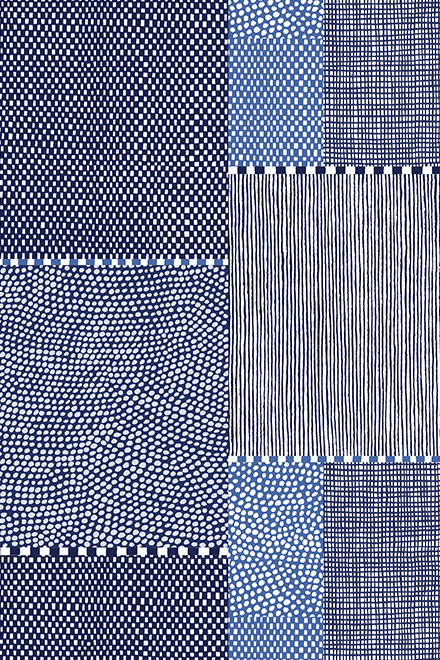
手さぐりで水玉を描きストライプを描いて空間を埋めていった。
外国で暮らしていると無意識のうちに
自分のアイデンティティーやルーツを考えている。
日本への想いもある。それが思いがけず出てきたようだ。
端切れになっても残しておきたいと思うものを
作りたいという強い想いがあった。
(脇阪 克二)
"Magasane / Dots and stripes"(2006,by Katsuji Wakisaka)
I just draw the water drops and stripes pattern randomly to made this "magasane".
“Magasane” is about identities and permanency.
As a matter of fact, living abroad makes me more aware of my identity.
I was keeping sight of who I am while homesickness strikes now and then.
It makes me being conscious of Japanese-style design.
I hope "magasane" is loved permanently even if it becomes a small piece fabric scraps.
| English translation by LI XIAO XIAO |
"Magasane"(2006, par Katsuji Wakisaka)
Magasane fait référence aux motifs de gouttes d'eau dessinées aléatoirement dans les bandes séparants les différents tissus.
En vivant à l'étranger, on réfléchit inconsciemment à notre identité et nos racines.
Évidemment au Japon. Et voici le motif qui en est ressorti, né d’un désir profond de fabriquer un motif original avec de vieilles chutes de tissus.
| Traduction française par Jean-Baptiste Fauvel Matsumoto |
"點線"(2006, 脇阪 克二)
我憑感覺畫一些圓點,再描一些線條,填滿紙面。
這些自然畫出的點和線中,
有我居住在外國時對自我存在感的理解,
以及對出生之地日本的思慕。
創作這副布料設計時,
我有一個强烈的念頭:
設計出即使被剪成了邊角料,也值得人品味珍惜的印花。
| 中譯 : 李 瀟瀟 |
→こちらのテキスタイルデザイン商品
(Textile products with this pattern)
平成28年04月16日 土曜日号
“おおいぬのふぐり 平成20年”
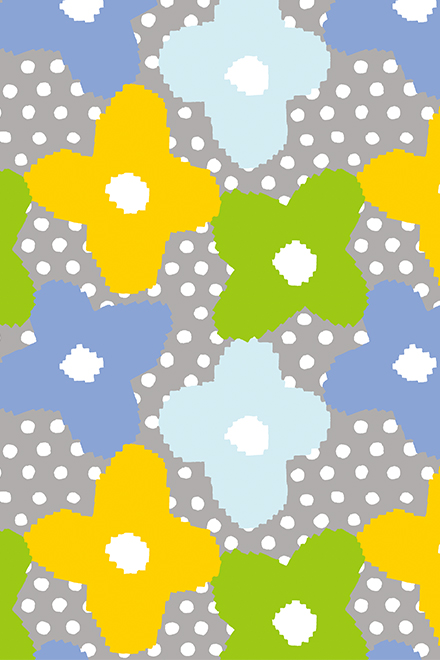
緑の中に小さく鮮やかな
おおいぬのふぐりの
青い花がびっしり並んでいる。
どういうわけか青空を見ている感じがする。
これを発見すると
春が来たなあとうれしくなる。
(脇阪 克二)
"Ōinunofuguri / Tiny blue flowers in spring"(2008,by Katsuji Wakisaka)
Small bright blue flowers,
Called Persian speedwell,
Rising from the green on this mild spring's day.
They grow densely around the countryside,
Make a carpet like the blue of sky.
Wherever they shine I'll be happy to wander,
Remembering the coming of spring in delights.
| English translation by LI XIAO XIAO |
"Ōinunofuguri / Véronique de Perse"(2008, par Katsuji Wakisaka)
De petites fleurs bleues éclatantes,
Appelées Véronique de Perse,
Abondent dans la verdure.
Curieusement, elles ne vont pas sans nous rappeler le ciel bleu.
Une découverte qui nous réjouit de la venue du printemps.
| Traduction française par Jean-Baptiste Fauvel Matsumoto |
"小野花"(2008, 脇阪 克二)
一片綠意中,綻放著一排藍色的小野花
它們的名字叫阿拉伯婆婆納
擡眼望去,那場景恍如一片鋪陳的青空
每當在路邊發現這些藍色精靈
都會真實感受到春之降臨
| 中譯 : 李 瀟瀟 |
→こちらのテキスタイルデザイン商品
(Textile products with this pattern)


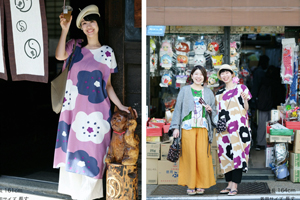
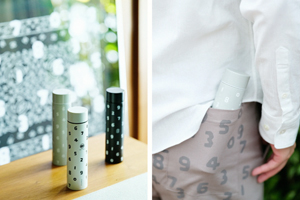
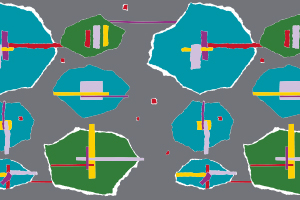

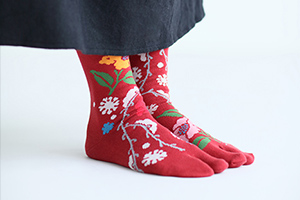
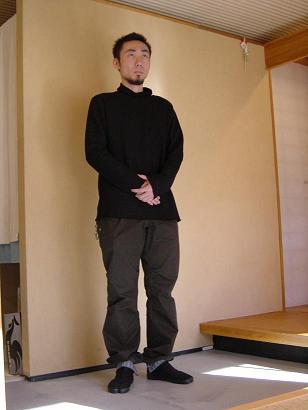
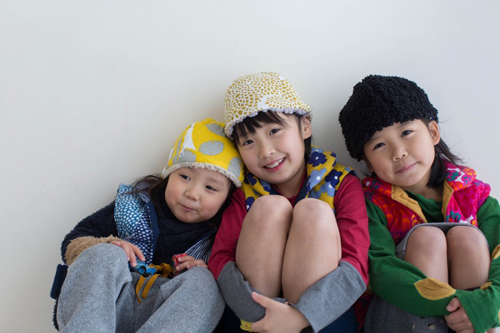

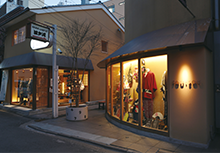
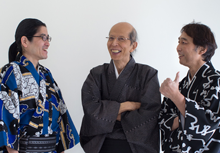

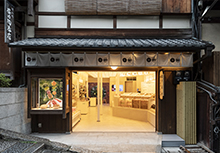

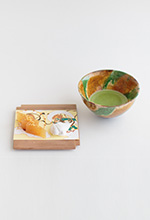
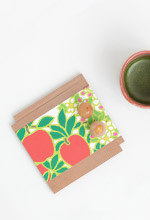










 お問い合わせ窓口
お問い合わせ窓口










